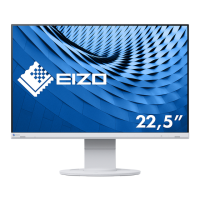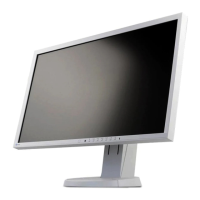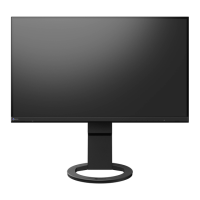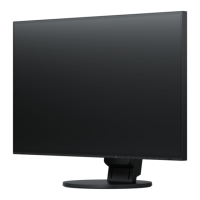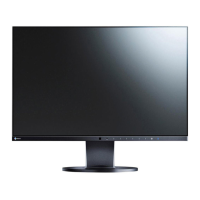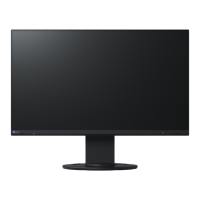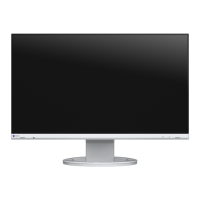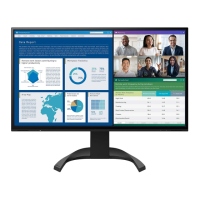Chapter 5 Troubleshooting
5-1. No Picture
Problem Possible cause and remedy
1. No picture
• Power indicator does not light up.
• Check whether the power cord is connected properly.
• Turn on the main power switch on the rear side of the monitor.
• Touch
.
• Turn o the main power switch on the rear side of the monitor, and
then turn it on again a few minutes later.
• Power indicator is lighting white. • Increase “Brightness”, “Contrast”, or “Gain” in the Setting menu (see
“Color Adjustment” (page 17)).
• Power indicator is lighting orange. • Switch the input signal.
• Turn the setting “On” for “Compatibility Mode” on the “Administrator
Settings” menu (see “Compatibility Mode” (page 26)).
• Move the mouse or press any key on the keyboard.
• Check whether the PC is turned on.
• Turn o the main power switch on the rear side of the monitor, and
then turn it on again.
• Power indicator is ashing orange
and white.
• This symptom may occur during DisplayPort input. Use a signal
cable recommended by us for the connection. Turn the monitor o
and on.
2. The message below appears. This message appears when the signal is not input correctly even
though the monitor is functioning properly.
• This message appears when no
signal is input.
Example:
• The message shown left may appear, because some PCs do not
output the signal immediately after power-on.
• Check whether the PC is turned on.
• Check whether the signal cable is connected properly.
• Switch the input signal.
• Turn o the main power switch on the rear side of the monitor, and
then turn it on again.
• The message shows that the
input signal is out of the specied
frequency range.
Example:
• Check whether the PC is congured to meet the resolution and
vertical scan frequency requirements of the monitor (see “1-3.
Supported Resolutions” (page 10)).
• Reboot the PC.
• Select an appropriate setting using the graphics board’s utility. Refer
to the User’s Manual of the graphics board for details.
28
Chapter 5 Troubleshooting
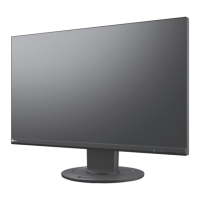
